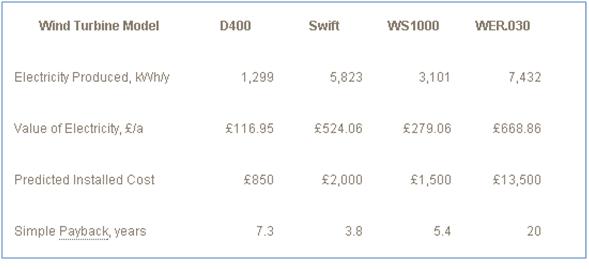EDF Urban Wind Study
With funding from EDF Carbon Descent undertook a study to research the feasibility of the use of wind power systems in an urban area such as the London Borough of Southwark. We examined the range of technologies currently available or being developed as prototypes and assessed the estimated energy yield and financial payback periods.
The report found that urban wind power has the potential to outperform other urban renewable technologies but this is highly dependent on the wind conditions at a specific site. The annual energy in 1m2 of swept area facing the prevailing wind is approximately 1,315kWh/y at an average wind speed of 5m/s. The same area of ideally oriented surface in London would collect 1,100kWh/y of solar energy so the energy contents are roughly equivalent. In addition to this the best solar photovoltaic (PV) panel is around 13% efficient whereas wind turbines can achieve conversion efficiencies of 35%. However these figures are highly dependent on actual average wind speed.
The table below gives the simple payback for 4 different models of turbine using real wind speed data from the top of a tower block on the Portland Estate. This shows that paybacks below 4 years could be achieved.

The study also pointed out some problems with the installation of the wind generation technology. Apart from the concerns of turbulences and low wind speed, we discovered that the main issue will be the mounting on older properties where lime mortars were used as they do not deliver sufficient support to deal with the forces exerted. Therefore, the study recommended concentrating mainly on tall buildings and blocks of flats as they are likely to benefit from higher wind speeds could prove extremely attractive.